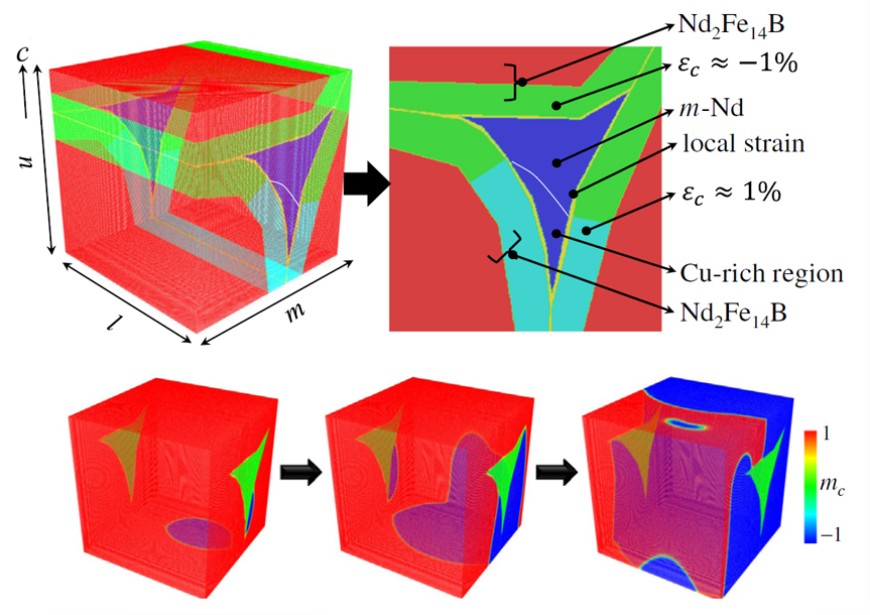Multiscale Examination of Strain Effects in Nd-Fe-B Permanent Magnets
New Publication in “Physical Review Applied”
2017/07/12

Authors: Min Yi, Hongbin Zhang, Oliver Gutfleisch and Bai-Xiang Xu
We perform a combined first-principles and micromagnetic study on the strain effects in Nd-Fe-B permanent magnets. First-principles calculations on Nd2Fe14B reveal that magnetocrystalline anisotropy (K) is insensitive to deformation along the c axis, and that a-b in-plane shrinkage is responsible for K reduction. The predicted K is more sensitive to lattice deformation than the previous phenomenological model suggests. The biaxial and triaxial stress states have a greater impact on K. Negative K occurs in a much wider strain range in the a-b biaxial stress state. Micromagnetic simulations of Nd-Fe-B magnets using first-principles results show that a 3% to 4% local strain in a 2-nm-wide region near the interface around the grain boundaries and triple junctions leads to a negative local K and thus, remarkably, decreases the coercivity by about 60%, or 3 to 4 T. The local a-b biaxial stress state is more likely to induce a large loss of coercivity. In addition to the local stress states and the strain levels themselves, the shape of the interfaces and the intergranular phases also makes a difference. Smoothing the edge and reducing the sharp angle of the triple regions in Nd-Fe-B magnets would be favorable for a coercivity enhancement.



